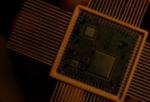D&R Industry Articles (January 2014)
Articles for the Week of January 27, 2014

A design methodology using Power-Grid Prototyping to optimize Area Performance of SoCs
This paper first describes a methodology for power grid optimization leveraging early static IR flow and correlating with existing sign-off results. It also presents a methodology for doing early dynamic IR drop analysis, which can identify potential overdesigns in the grid to save valuable signal routing area. It outlines the impact of Metal6 power grid width variations on Static and dynamic IR drop using STB SoC in 40 nm Wire bond chip.- On hardware dependencies and scrum
- Attaching Accelerators in Multicore Systems
- Designing low-power sequential circuits using clock gating
- Design Tip: Implementing an SoC with dependable 50% duty cycles
Articles for the Week of January 20, 2014
Additional Articles- HEVC to the rescue
- PCIe and storage devices get connected
- Migrating your embedded PCB design from DDR2/3 to DDR4 SDRAMs
Articles for the Week of January 13, 2014

Using Transactions to Effectively Debug Large SoC Designs
SoC designs are large designs made by combining other large designs. A typical SoC has many communication pathways and a large amount of parallel activity. In order to debug these kinds of designs effectively new approaches must be taken. This paper discusses the requirements for effective debug in the face of today's large SoCs, outlining real world example and making some recommendations for easier solutions. This includes transaction based debug, with special attribute recording. These special attributes help identify "connected" transactions.- Using USB 3.1's Multiple INs To Reach 10 Gbps Data Rates
- Overcome memory-imposed access rate and bandwidth constraints
Articles for the Week of January 6, 2014

Moving PCI Express to Mobile (M-PCIe)
This paper will begin with a quick overview of the specification and its application space, and then go into details such as bandwidth and clocking considerations, PHY interface differences, power management impacts, and the tradeoffs related to choices around link-layer changes. These changes may impact the transaction and application layers of devices moving from PCIe to M-PCIe, and the paper will detail those issues. A basic understanding of PCI Express concepts is helpful but not required.Articles for the Week of December 30, 2013
Additional Articles- RTL synthesis requirements for advanced node designs
- Shaving power/area with merged logic in SoC designs








